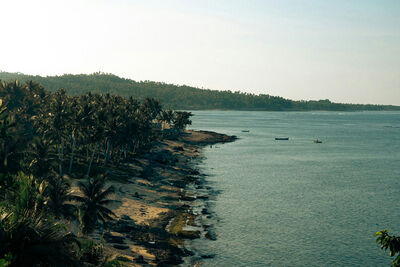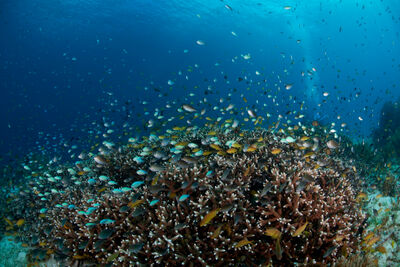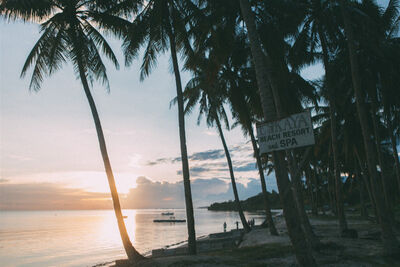Named after King Philip II of Spain, the Philippines is a sun-kissed island nation in Southeast Asia. With over 100 million people, a whopping 7,000 (and counting) islands, more than a thousand species of orchid, just under 200 living languages, around 30 active volcanoes and ten seas, the Philippines is a diverse nation rich in history, culture and traditions. Ready to learn more about what makes this smattering of islands oh-so tempting? Read on to discover five fascinating Philippines facts…

The Philippines has 7,641 islands (for now)
For a long time, the official number of islands in the Philippines was said to be 7,107. However, that number isn't quite right. In 1952, Didicas (a submerged volcano in the Luzon Volcanic Chain) erupted. The result? A new island with a lava dome that rose about 228 meters above sea level, bumping the total island count to 7,108… for a short while, anyway.
As well as this new island, improvements in surveying techniques and technology have also led to an increase in the number of islands believed to be in the archipelago. There are also a few islands whose ownership is up for debate. The Spratly Islands in the South China Sea, for example, are disputed between several nations: Vietnam, Brunei, China, Malaysia, Taiwan and the Philippines. With all these changes, the official number of islands is now officially touted to be 7,641 - an island-hopper's paradise.
The Philippines endured Spanish and American colonial rule
Before its independence in 1946, the Philippines was ruled by the Spanish and the Americans for over three centuries. This colonisation began in 1565 when Spanish explorer Miguel Lopez de Legazpi arrived from New Spain (modern-day Central America). The Spanish ruled until the Spanish-American War ended, and the Americans took over control of the Philippines.
Both Spanish and American influences are still felt today in the Philippines. The Spanish left their mark on the language, with many Spanish terms woven into local Filipino languages. Religion was also shaped by the Spanish - the Philippines is today one of two Asian countries to be predominantly Catholic (the other is Timor-Leste). The Americans, on the other hand, influenced the government and education system. The modern Philippines is a constitutional republic with a president, and the brief period of American rule also explains why the English language is so widely spoken across the archipelago.

The Philippines is a megadiverse country
To be labelled as megadiverse, a country needs to be home to numerous endemic species as well as myriad species of flora and fauna. And the Philippines more than fits the bill: there are an estimated 13,500 plant species in the country (with 3,500 of them being endemic), and the jungles and rainforests house around 8,000 flowering plant species (including 998 orchid species alone). As for the fauna, the Philippines has 167 land mammals (102 endemic species), 235 reptiles (160 endemic species), 99 amphibians (74 endemic species), 686 birds (224 endemic species) and over 20,000 insect species. Impressive.
The Philippines is equally blessed below the waves as it is on land. The islands sit at the top of the Coral Triangle - the global hotspot for marine biodiversity. Overall, the Philippines is home to over 3,200 fish species, including some that are hard to encounter anywhere else, like the thresher sharks of Malapascua. From the shores of its islands, you can spot one of the smallest fish species in the world (the teeny-tiny Philippine goby) and the world's biggest fish (the whale shark) and thousands of other species whose size falls between the two extremes.
The Philippines caters to different dive tastes
The Philippines isn't just diverse above water: its diving is extremely varied too. Find everything from muck diving in Anilao and Dauin to drift diving in Puerto Galera and Bohol. Head to Coron for incredible shipwrecks, or to Cebu's Malapascua and Moalboal for encounters with thresher sharks. One of the most exciting Philippines facts is that there's something for every diver.
And then there's the jewel in the crown: Tubbataha Reef. This UNESCO World Heritage site sits in the middle of the Sulu Sea and is only reachable via liveaboard. Due to the open nature of the reef - it's around 90 miles from shore - it also has a short diving season. The window only runs from March to June, but the reward for those who venture out there is undeniable: whale sharks, tiger sharks, manta rays, hammerhead sharks, turtles and Napoleon wrasse will all be vying for your attention.

The Philippines is blessed with beautiful beaches
There's just as much to enjoy in the Philippines above the surface as there is beneath the waves. The islands are blessed with abundant beautiful beaches, and in most places, dive sites are a short bangka ride away from shore. These traditional Philippine boats usually return to the dive centre after each dive (typically around ten minutes away, though there are also further day trips available), allowing ample time to lie on the silky sands.
Alona Beach, on Panglao Island in Bohol, is ideal for chilling after dives on nearby Napaling Reef. There's also Bounty Beach in Malapascua, White Beach in Puerto Galera and Waling Waling Beach in Coron, all idyllic places to catch a few rays or, if you've finished diving, a cheeky Tanduay (local rum) at sunset.
















